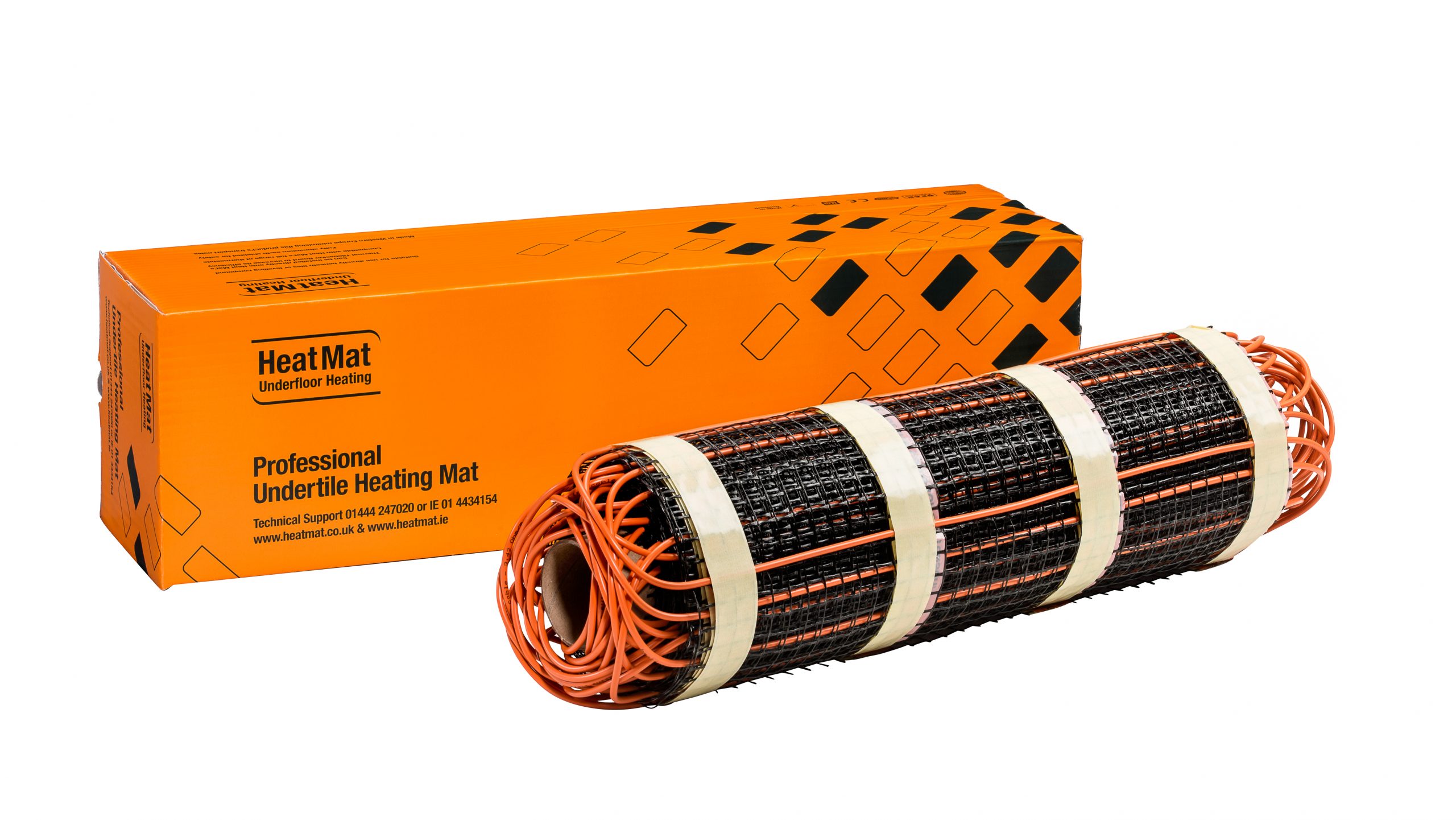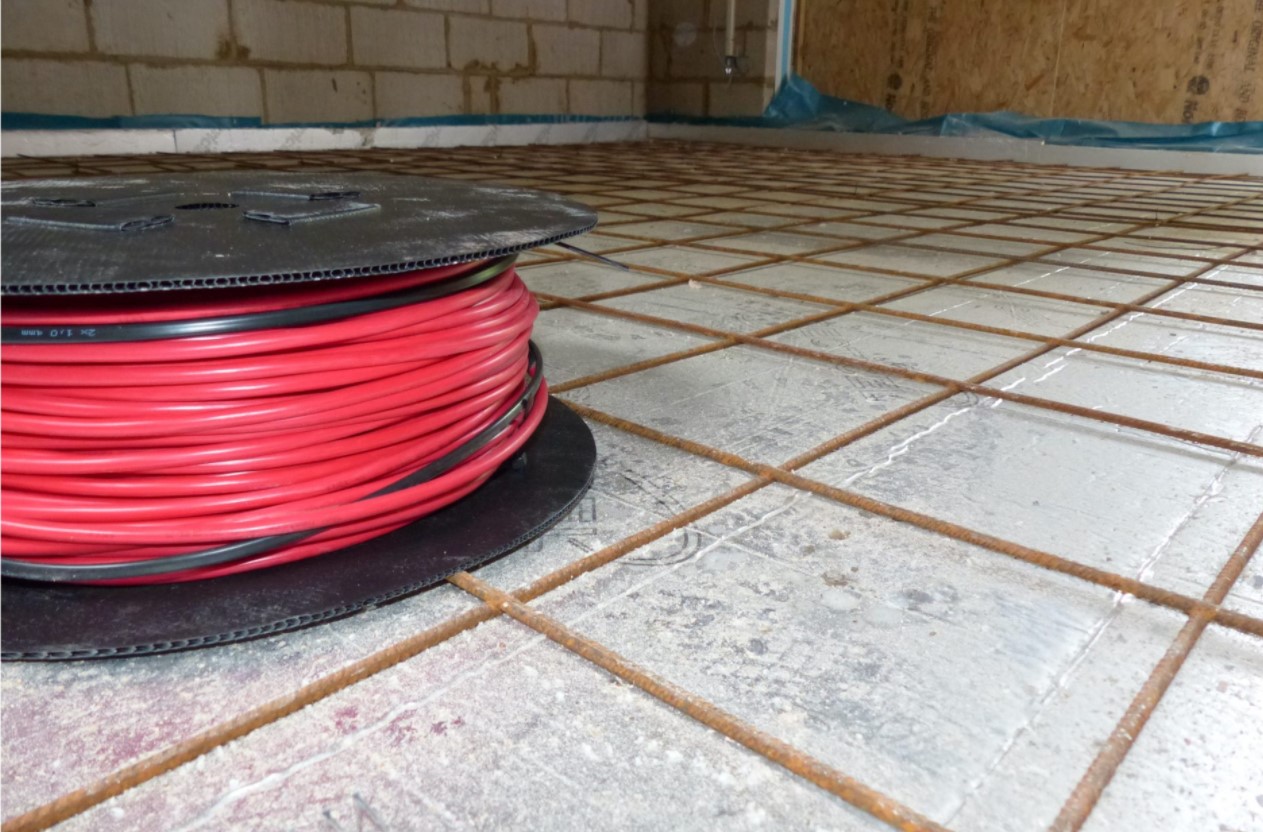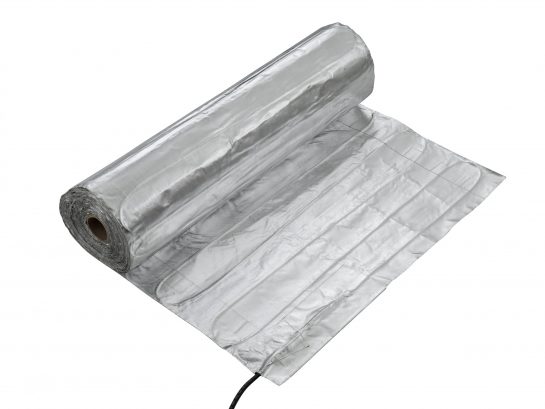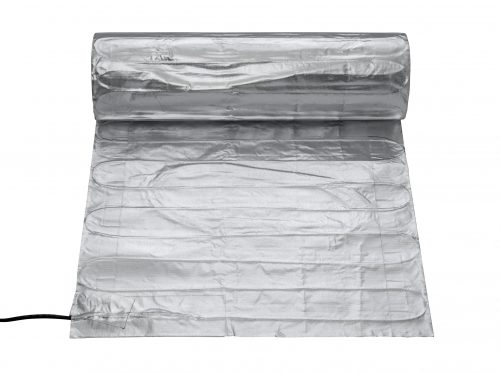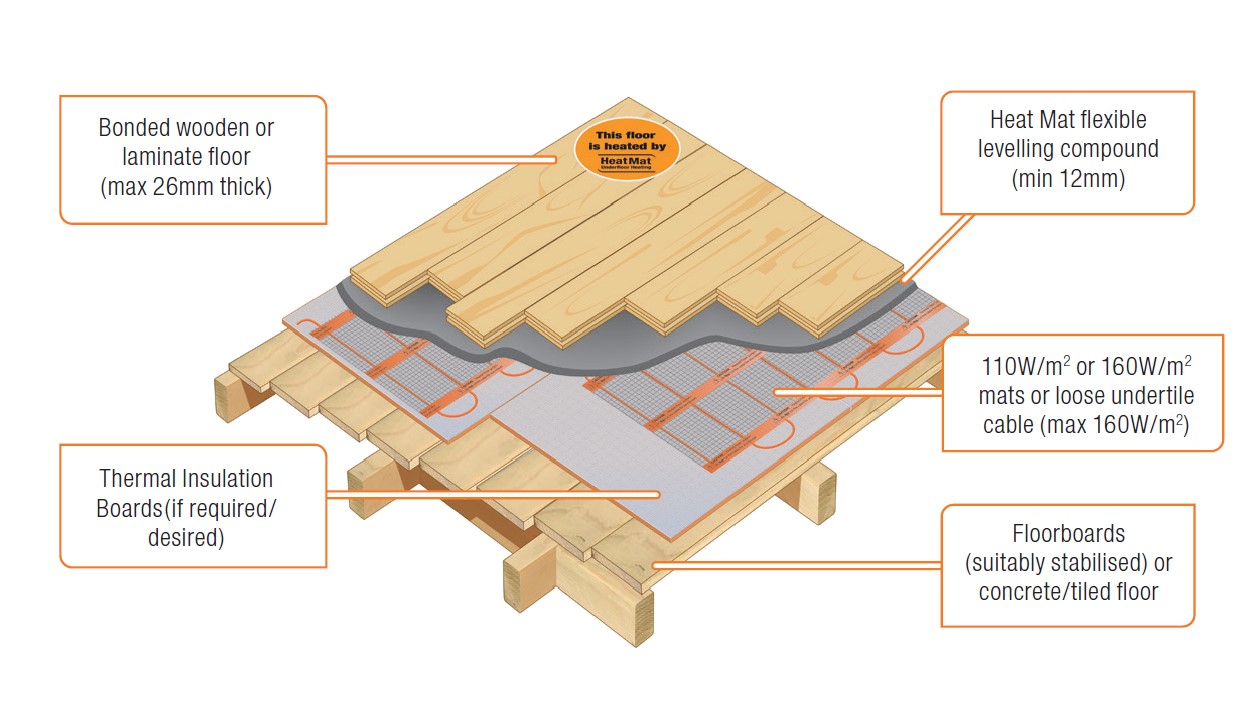UK Underfloor Heating running cost information
Heat Mat electric underfloor heating can be very economical to run when used with sub floor insulation boards in well insulated rooms (to current insulation standards).
In these circumstances the heating could typically cost as little as £6.48 per square metre to run per annum whilst providing full room heating. This is based on a 200W system heating the room for 135 days a year, ten hours a day and supplying power for 30% of that time. As with any other type of heating system it would cost more to heat the average conservatory than it would the average internal room.
A typical cost would be £9.44 per square metre per annum based on a 200W system heating the room for 210 days a year, eight hours a day and supplying power for 35% of that time. In reality, however, most systems fitted in conservatories are used much less as end users simply turn them on an hour or so before they wish to use the conservatory. Both of the above examples assume a unit price for electricity of 8p per kilowatt hour. The actual cost of running the system does, however, depend on a number of factors.
The largest single factor affecting the cost of running any heating system, apart from the cost per unit of electricity, is the required room temperature. The higher the target room temperature is set the more the system will cost to run. In normal circumstances a room temperature of 20o Celsius will allow an underfloor heating system to run very efficiently. Once target room temperatures exceed 25o Celsius the cost increases disproportionately as with any heating system. The better insulated a room is the less the system will cost to run. In addition to having well insulated walls and ceiling, the greatest benefits can come from insulating the floor. The closer the insulation layer is to the underfloor heating the more effective it will be. For instance, if the insulation layer is below a concrete base which the underfloor heating is laid onto the heating will warm the concrete base first before starting to heat the floor and room. A more efficient way to provide insulation is to place the insulation directly beneath the heating, such as when using Heat Mat's Thermal underfloor heating insulation board beneath a heating mat or cable system, or Decora beneath a heating ribbon system. Both of these insulation layers will significantly speed up the reaction time of the heating system and allow it to run more efficiently.
The thermostat controlling the heating also plays a large part in ensuring it runs efficiently by cutting off the power to the heating the moment the room reaches the required temperature. Heat Mat's thermostat/timers allows you to control the temperature of your room very efficiently and utilises both an ambient room temperature sensor and a sub floor temperature sensor. The thermostat can learn the individual heat characteristics of a room so that it can anticipate when to start heating a room to reach a required temperature for a set time. Another way to allow your underfloor heating system to run more effectively is to use a 200W system where floor coverings allow.
If a 200W system is installed onto Heat Mat Thermal underfloor heating insulation board and used with Heat Mat's intelligent thermostat it takes into account the faster warm up time of the more powerful system meaning the heat loss during the warm up time is reduced. When used with an effective layer of insulation directly beneath it, underfloor heating should be more efficient than any other form of electric heating including panel heaters, fan heaters and radiant heaters. The main reason for this is that in rooms heated with underfloor heating most people set the required temperature slightly lower than normal, as your body naturally prefers a warm temperature around your feet with a slightly cooler temperature at head height.


